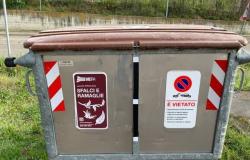Work began this morning on the construction site that will proceed with the construction of lot two of Costa Sud. From the last stretch of Torre Quetta on the Di Cagno Abbrescia seafront, the two lanes have been delimited. The municipal ordinance provides for the narrowing of the roadway to make the works accessible, which will continue until November 30th. The construction site will be fully operational only after the summer so as not to compromise the bathing season.
The project of lot 2 It mainly involves the naturalistic redevelopment of the coastal strip and the creation of a system of cycle and pedestrian paths. Play areas, spaces for bathing, public spaces and multi-purpose sports fields are planned. All routes will have a naturalistic character while ensuring the use of the area by people with disabilities and by emergency and maintenance vehicles. The road system will be modified by reducing the roadway.
Below is a summary of the interventions planned as part of the design of the “Torre Quetta Coastal Park”:
The main operational actions envisaged by the project are summarized in:
Coastal road: review of the road section. The objective of the intervention is to mend the relationship with the public space in front of the road, slow down traffic ensuring safe crossings as well as structuring the road section as an urban space equipped to serve the local community. Ultimately, the planned operations go in the direction of transforming the current arterial road into a park road also through the activation of zone 30.
New network of cycle-pedestrian paths: in addition to the cycle-pedestrian path that develops along the vehicle ridge, the project makes use of other spaces dedicated to mixed travel. These routes have the main task of connecting the backbone of the park, the beach and the hinterland, while ensuring accessibility to the equipped/sports areas.
New equipped areas: the leisure areas and children’s play areas are located near the main axes of cycle and pedestrian access to the park and close to the coastal road. All the areas, of equal size (just under 300 m2) and elliptical in shape, differ from each other not only for the different equipment and functions, which distinguish their users, but also for the color of the flooring, which is draining and anti- trauma. The colors proposed seek a balance between the need to highlight these “new functional opportunities” and the need for integration with the natural medium.
Replacement of asphalted parking surfaces with draining pavements: the existing car park, located north of the SS16, today has an asphalt surface and is equipped with a metal fence. The intervention involves the removal of the fence. No substantial changes of a geometric and formal nature are envisaged, but exclusively relating to the revisiting of the material surface. In fact, the treatment aims to guarantee the superficial infiltration of rainwater. For this reason, the removal of the existing asphalt and its replacement with ecological draining conglomerate such as biostrasse are planned. The car park will also be efficiently connected to the cycle-pedestrian path network and will guarantee accessibility to people with reduced mobility. The number of parking spaces, however, will remain unchanged.
Public accessibility interventions to the beach: the project involves the redevelopment of the coastal stretch of Torre Quetta beach through an integrated reinterpretation of functions, infrastructures and landscape, which allows the reconstruction of a “system” between greenery, promenade, functional facilities and access to the sea ; the interventions, “subtracting” from the existing built and immovable elements, will constitute a “discreet” and light system. The project for the reorganization and use of the coast, oriented towards environmental sustainability in terms of removability and lightness of the accessibility structures, involves the creation of pedestrian paths, orthogonal to the coast, connecting equipped green areas, promenades, services (new kiosks and toilets), beach, characterized by the new strip of garrigue (type of Mediterranean vegetation), system of seasonal platforms for bathing use and piers for access to the sea. The seasonal paths and platforms, completely reversible, will be made with a ballasted wooden slat, simply supported, without any constraints.
Planting interventions: the redevelopment of the existing vegetation and the mending of this section of coast with new tree and shrub plantings through reforestation and the creation of large areas of Mediterranean scrub which will bring benefits both in environmental and landscape terms are planned. The trees and ground cover chosen are consistent with the objective of increasing the quality of the area from an ecological and social as well as landscape perspective, preserving and enriching the landscape peculiarities of the area.



